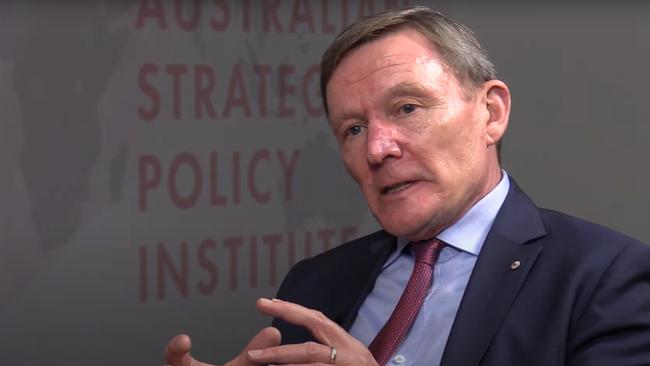ASIS director-general Paul Symon talks about ‘reasonable force’, initial risks of agency
Australia’s top spy reveals he used a kidnapping scenario to convince federal MPs to let his officers use ‘reasonable force’.

Australia’s top spy has revealed he used an overseas kidnapping scenario to convince federal MPs to allow his officers to use “reasonable force” while on operation, in the first video interview with an Australian Secret Intelligence Service director-general in the agency’s 68-year history.
Paul Symon, who was appointed ASIS director-general in December 2017 after a 35-year career in the military and smaller stint at the Department of Foreign Affairs and Trade, also acknowledged there were concerns that the risks of having a foreign espionage service “outweighed the benefits” when it was first established in the 1950s.
“Any gems of intelligence that we provided for the Australian government were going to be very few and far between,” he told the Australian Strategic Policy Institute in the first of four on-camera interviews.
Mr Symon, whose career in the army culminated in the rank of major general, said ASIS officers could use self-defence techniques such as deploying pepper spray but not violence.
The ability of ASIS officers to use weapons was abolished in the mid-1980s following a royal commission and the Sheraton Hotel incident, in which a botched training exercise saw considerable force used and military-style weapons waved around, shocking hotel staff and guests who had not been informed of the pretend operation.
The limited use of weapons and self-defence was reintroduced in the early 2000s and “reasonable and necessary force” was added in late 2018.
“We’re talking about the low end of the spectrum of using self-defence techniques where lethal force is inappropriate, but there might be scenarios where using proportionate low-level techniques to achieve an outcome is appropriate,” Mr Symon said.
The Director-General mapped out various scenarios to federal MPs to encourage them to pass the “reasonable and necessary” force amendment, including where an Australian had been kidnapped in Africa and the person’s employer or family and friends were willing to pay a ransom.
“You’re trying to release an Australian national who’s being held hostage, but the circumstances of effecting that transfer – it might be in the middle of the night, there might be disorientation, there might be a whole range of reasons why the individual who doesn’t really know what’s going on, needs to be moved physically from one location into the back of a vehicle or whatever,” Mr Symon said.
“Of course, it’s in their interest, but they might also resist because of the disorientation and the shock and the like.
“I was concerned that our officers might be at some legal peril if we weren’t able to use proportionate, low-end force. Clearly not violent or grievous bodily harm, nothing like that, but in that low-end of the spectrum there are quite a number of scenarios that I was able to paint for both sides of politics and they said ‘we understand’ and that was the reason that those changes were made.”




To join the conversation, please log in. Don't have an account? Register
Join the conversation, you are commenting as Logout